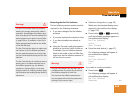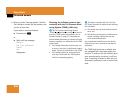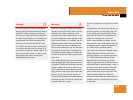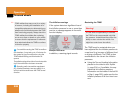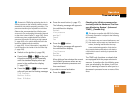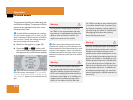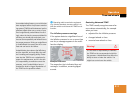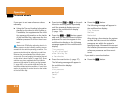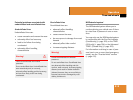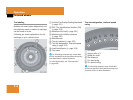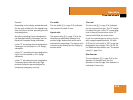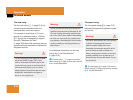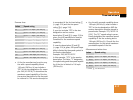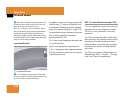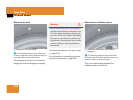
313
Operation
Tires and wheels
Potential problems associated with
underinflated and overinflated tires
Underinflated tires
Underinflated tires can:
ț cause excessive and uneven tire wear
ț adversely affect fuel economy
ț lead to tire failure from being
overheated
ț adversely affect handling
characteristics
Overinflated tires
Overinflated tires can:
ț adversely affect handling
characteristics
ț cause uneven tire wear
ț be more prone to damage from road
hazards
ț adversely affect ride comfort
ț increase stopping distance
MOExtended system*
The MOExtended system allows you to
continue driving your vehicle even if there
is a total loss of pressure in one or more
tires.
You may only use the MOExtended system
in conjunction with the Run Flat Indicator
(Canada only) (
୴ page 304) or the TPMS
(USA only) (
୴ page 306) or the Advanced
TPMS* (Canada only) (
୴ page 309).
For information on driving in case of pres-
sure loss in one or more tires (emergency
mode), see the “Practical hints” section
(
୴ page 419).
Warning! G
Follow recommended tire inflation
pressures.
Do not underinflate tires. Underinflated tires
wear excessively and/or unevenly,
adversely affect handling and fuel economy,
and are more likely to fail from being
overheated.
Warning! G
Follow recommended tire inflation
pressures.
Do not overinflate tires. Overinflated tires
can adversely affect handling and ride
comfort, wear unevenly, increase stopping
distance, and result in sudden deflation
(blowout) because they are more likely to
become punctured or damaged by road
debris, potholes etc.



